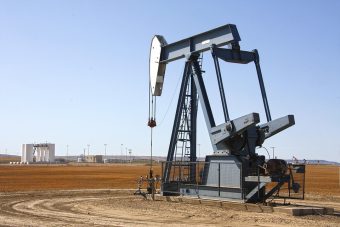Oil and gas companies are facing a critical challenge as the world increasingly shifts towards clean energy transitions. Fossil fuels drive the companies’ near-term returns, but failure to address growing calls to reduce greenhouse gas emissions could threaten their long-term social acceptability and profitability.

The oil and gas industry now needs to make clear what clean energy transitions mean for it – and what it can do to accelerate clean energy transitions.
Whatever path the world follows in its efforts to limit the rise in global temperatures, intensifying climate impacts will increase the pressure on all industries to find solutions. While some oil and gas companies have taken steps to support efforts to combat climate change, the industry as a whole could play a much more significant role through its engineering capabilities, financial resources and project-management expertise, according to the IEA’s Oil and Gas Industry in Energy Transitions report.
“No energy company will be unaffected by clean energy transitions,” said Dr Fatih Birol. “Every part of the industry needs to consider how to respond. Doing nothing is simply not an option.”
The landscape of the oil and gas industry is diverse, meaning there is no single strategic response but a variety of approaches depending on each company’s circumstances.
“The first immediate task for all parts of the industry is reducing the environmental footprint of their own operations,” Dr Birol said. “As of today, around 15% of global energy-related greenhouse gas emissions come from the process of getting oil and gas out of the ground and to consumers. A large part of these emissions can be brought down relatively quickly and easily.”
Reducing methane leaks to the atmosphere is the single most important and cost-effective way for the industry to bring down these emissions. But there are ample other opportunities to lower the emissions intensity of delivered oil and gas by eliminating routine flaring and integrating renewables and low-carbon electricity into new upstream and LNG developments.
“Also, with their extensive know-how and deep pockets, oil and gas companies can play a crucial role in accelerating deployment of key renewable options such as offshore wind, while also enabling some key capital-intensive clean energy technologies – such as carbon capture, utilisation and storage and hydrogen – to reach maturity,” Dr Birol added. “Without the industry’s input, these technologies may simply not achieve the scale needed for them to move the dial on emissions.”
Some oil and gas companies are diversifying their energy operations to include renewables and other low-carbon technologies. However, average investment by oil and gas companies in non-core areas has so far been limited to around 1% of total capital spending, with the largest outlays going to solar PV and wind. Some oil and gas companies have also diversified by acquiring existing non-core businesses – for example in electricity distribution, electric-vehicle charging, and batteries – while stepping up research and development activity. But overall, there are few signs of the large-scale change in capital allocation needed to put the world on a more sustainable path.
An essential task is to step up investment in the fuels – such as hydrogen, biomethane and advanced biofuels – that can deliver the energy system benefits of oil and gas without net carbon emissions. Within 10 years, these low-carbon fuels would need to account for around 15% of overall investment in fuel supply if the world is to get on course to tackle climate change. In the absence of low-carbon fuels, transitions become much harder and more expensive.
“The scale of the climate challenge requires a broad coalition encompassing governments, investors, companies and everyone else who is genuinely committed to reducing emissions,” said Dr Birol. “That effort requires the oil and gas industry to be firmly and fully on board.”
Low-carbon electricity will undoubtedly move to centre stage in the future energy mix. But investment in oil and gas projects will still be needed, even in rapid clean energy transitions. If investment in existing oil and gas fields were to stop completely, the decline in output would be around 8% per year. This is larger than any plausible fall in global demand, so investment in existing fields and some new ones remains part of the picture.
In some cases, company owners may favour sticking with a specialisation in oil and gas – possibly shifting more towards natural gas over time – for as long as these fuels are in demand and investment returns are sufficient. But these companies will also need to think through their strategic response to new and pervasive challenges. The stakes are particularly high for national oil companies charged with the stewardship of countries’ hydrocarbon resources – and for their government owners and host societies that typically rely heavily on the associated oil income.
National oil companies account for well over half of global production and an even larger share of reserves. Some are high performing, but many are poorly positioned to adapt to changing global energy dynamics. Global energy trends have prompted a number of countries to renew their commitment to reform and to diversify their economies, and fundamental changes to development models in many major resource holders look unavoidable. National oil companies can provide important elements of stability for economies during this process, if they are operating effectively and alert to the risks and opportunities.
Source: IEA



